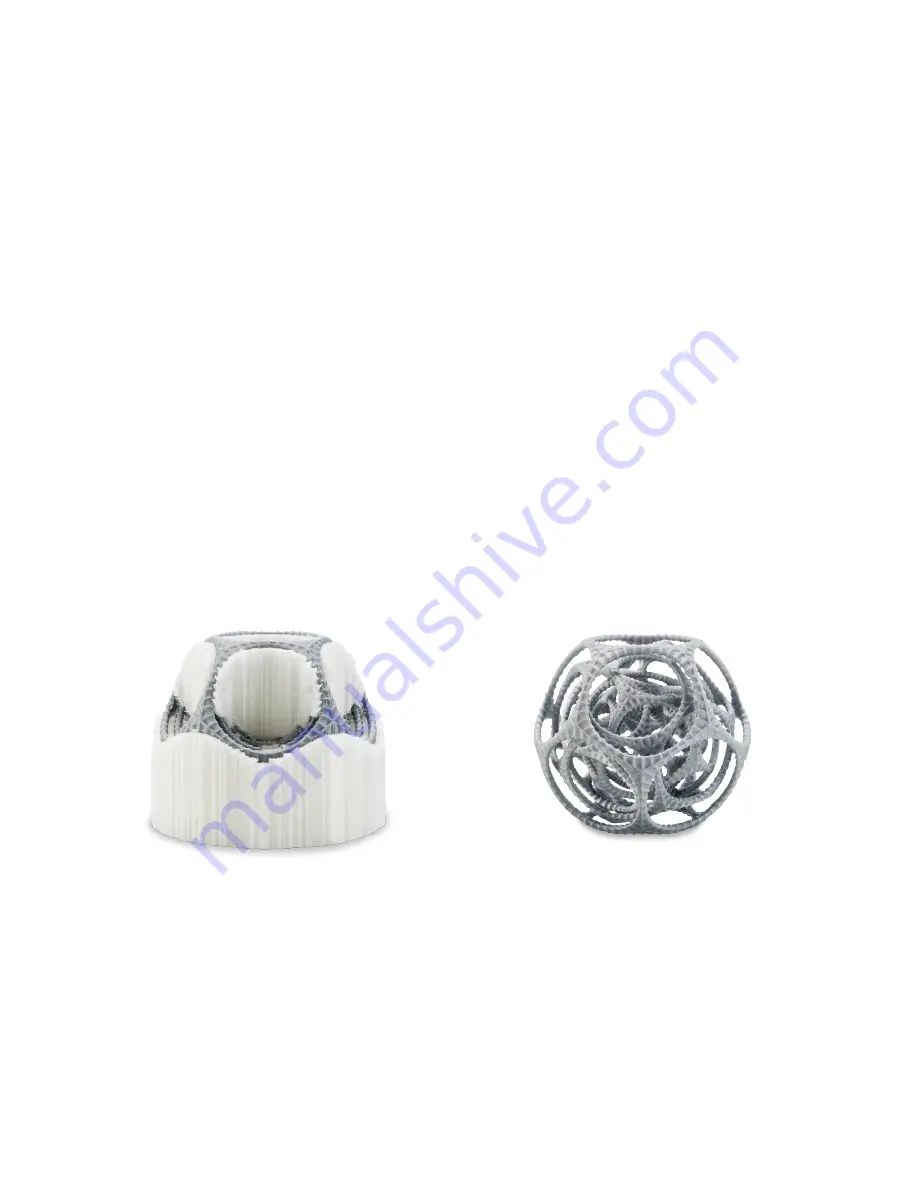
30
Removing support material (PVA)
Prints for which PVA has been used as support material require some post-processing to remove the PVA support material.
This can be done by dissolving the PVA in water.
1. Submerge the print in water
By putting a print with PVA in water the PVA will slowly dissolve. You can however speed up this process in
a few ways:
• By using warmer water a slight decrease in dissolving time can be reached. When you do this, make sure you use a
maximum temperature of 35 °C if your build material is PLA to avoid deformation of the PLA. Do not go above
50 °C for Nylon to prevent burns.
• Use stirring/running water to decrease the dissolving time significantly. When the water moves PVA will dissolve
much faster, which means that it can be dissolved in under three hours.
• Additionally you make it even easier for the PVA to dissolve, by putting the print in water for approximately
10 minutes first, after which you can remove most of the support by using pliers. When you now put the print back
in the water, it only has to dissolve the remaining parts of PVA.
2. Rinse with water
After PVA supports are totally dissolved, rinse the print with water to remove any excess PVA.
3. Let the print dry
Let the print dry completely and apply additional post-processing to the build material if necessary.
4. Disposal of waste water
Since PVA is biodegradable it is quite easy to dispose the water afterwards. The water can be disposed through the
drain when the waste water distribution network is connected to a wastewater treatment plant. After disposing the
water, run hot water from the tap for approximately 30 seconds to remove any excess of the saturated PVA water from
the drain and to avoid clogging on a long term.
It is possible to use the water for more than one print, but this might extend the dissolving time. The water will get
saturated by previously dissolved PVA, so for the quickest result it is always recommended to use new water.
Storage and handling of materials
When you have multiple spools of material in use or do not print with a material, it is very important that you store them
properly. When stored incorrectly this may affect the quality and process-ability of the material.
To keep your materials in optimal condition it is important that you keep them:
•
Dry and cool
•
Out of direct sunlight
•
In a resealable bag
The optimal storage temperature for PLA, CPE and Nylon is between -20 to +30° C. For ABS and PVA the advised
temperature is between 15 and 25° C. Furthermore a relative humidity of below 50% is recommended for PVA. If PVA is
exposed to a higher humidity the quality of the material can be affected.
You can store the material in a resealable bag, including the supplied desiccant (silica gel). For PVA it is advised to store
the spool in a resealable bag with the supplied desiccant directly after printing to minimize moisture uptake.



























